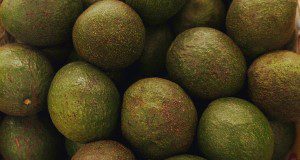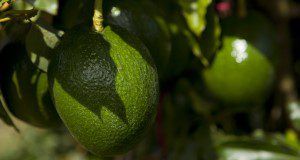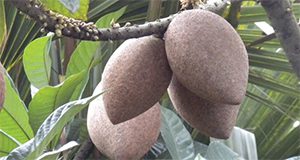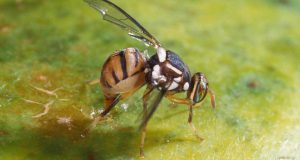Laurel wilt (LW) is a vascular disease caused by a fungal pathogen transmitted to avocado trees by several ambrosia beetle species and through root grafts among adjacent avocado trees. A critical part of preventing and controlling plant diseases is determining the causal agent so that the appropriate management practices can be implemented to eradicate or contain the outbreak. Proper sampling is a critical step in disease diagnosis and in the determination of the causal agent of disease. This new 3-page publication of the UF/IFAS Horticultural Sciences Department was written by Jonathan Crane, Romina Gazis, Jeff Wasielewski, Daniel Carrillo, Bruce Schaffer, Fredy Ballen, and Edward Evans.
https://edis.ifas.ufl.edu/hs1394
Tag: Edward A. Evans
Planning for a Successful Commercial Subtropical/Tropical Fruit Grove
Planning is the key to successful grove establishment, maintenance, and production. Developing a detailed infrastructure description and plan, cultural program, and financial and marketing plan for a new or existing grove with a new fruit crop will save you time and money and help minimize mistakes. Prospective growers should compile and analyze information needed to select a grove site, establish the needed infrastructure, and develop maintenance plans for the plants and how the production will be marketed. This new 15-page publication of the UF/IFAS Horticultural Sciences Department presents an outline of the type of information growers need when establishing a tropical fruit grove or contemplating management or modification of an existing grove. Written by Jonathan Crane, Yuncong Li, Edward Evans, Fredy Ballen, and Jeff Wasielewski.
https://edis.ifas.ufl.edu/hs1387
Recomendaciones para el Control y Mitigación de la Marchitez del Laurel y sus Vectores, los Escarabajos Ambrosia, en Arboledas Comerciales de Aguacate en Florida
This is the Spanish translation of Recommendations for Control and Mitigation of Laurel Wilt and Ambrosia Beetle Vectors in Commercial Avocado Groves in Florida (HS1360). Laurel wilt and the ambrosia beetle vectors that transmit this lethal disease have and will continue to affect avocado production in Florida. At least 50% of the commercial producers are Hispanic Americans and some are more comfortable with publications in Spanish. The translator, Rubén Regalado, and reviewer, Carlos Balerdi, are both previous employees of UF/IFAS.
https://edis.ifas.ufl.edu/hs1379
Irrigation System Descriptions for Tropical and Subtropical Fruit Crops in Florida
Florida’s tropical and subtropical fruit crop industries use various irrigation systems, including high-volume systems designed for irrigation and freeze protection, drip systems for herbaceous fruit crops (papaya, banana), and microsprinkler types, mainly for irrigation and fertigation. There continues to be a steady stream of potential tropical and subtropical fruit producers in Florida, many with little to no knowledge of the various types or purposes of various irrigation system that have been used successfully for the past 60 years. This new 9-page publication of the UF/IFAS Horticultural Sciences Department includes potential producers, Extension faculty and agents, and irrigation companies. Written by Jonathan Crane, Haimanote Bayabil, Edward A. Evans, and Fredy Ballen.
https://edis.ifas.ufl.edu/hs1375
Sample Profitability and Cost Estimates of Producing Sweet Flavored Carambola (Averrhoa carambola) in south Florida.
This 7-page fact sheet written by Fredy H. Ballen, Aditya Singh, Edward A. Evans, and Jonathan H. Crane and published by the UF/IFAS Food and Resource Economics Department reports the costs and returns of operating an established sweet-flavored carambola grove in south Florida. It is intended to provide a reference to help estimate the financial requirements of running an established grove. Information was collected through field interviews with growers and industry specialists about a wide range of production practices used on small farms of five acres or fewer.
https://edis.ifas.ufl.edu/fe1079
Recommendations for Control and Mitigation of Laurel Wilt and Ambrosia Beetle Vectors in Commercial Avocado Groves in Florida
The lethal laurel wilt epidemic affecting avocado trees in Florida is caused by a fungal pathogen-ambrosia beetle complex (LW-AB). The death of over 120,000 commercial avocado trees in Florida may be attributed to LW-AB. Recommendations for control and mitigation of this epidemic are needed to guide commercial producers in their decision-making process. This new 8-page publication of the UF/IFAS Horticultural Sciences Department outlines the LW-AB epidemic, provides information on the pathogen and ambrosia beetle vectors, provides a brief outline of current research findings, and offers recommendations for the control and mitigation of LW-AB. Written by Jonathan H. Crane, Daniel Carrillo, Edward A. Evans, Romina Gazis, Bruce Schaffer, Fredy Ballen, and Jeff Wasielewski.
https://edis.ifas.ufl.edu/hs1360
Recommendations for the Detection and Mitigation of Laurel Wilt Disease in Avocado and Related Tree Species in the Home Landscape
Avocado trees are a popular choice for homeowners in Florida, with over 600,000 growing in Florida home landscapes. However, avocado trees as well as others in the Lauraceae family are susceptible to laurel wilt disease, which can kill a tree in as few as three weeks. This new 7-page publication of the UF/IFAS Horticultural Sciences Department provides home owners recommendations for identifying and mitigating laurel wilt disease in the home landscape. Written by Jonathan H. Crane, Jeff Wasielewski, Daniel Carrillo, Romina Gazis, Bruce Schaffer, Fredy Ballen, and Edwards Evans.
https://edis.ifas.ufl.edu/hs1358
Cost Estimates of Producing Sugar Apple (Annona squamosa L.) in South Florida
Because of the growing interest in alternative tropical fruit crops to diversify farm income, this 6-page fact sheet written by Fredy H. Ballen, Aditya Singh, Edward Evans, and Jonathan Crane and published by the UF/IFAS Food and Resource Economics Department offers an estimate of costs and returns associated with operating an established sugar apple orchard in south Florida.
http://edis.ifas.ufl.edu/fe1053
Sample Productivity and Cost Estimates of Producing Longan (Dimocarpus longan Lour.) in South Florida
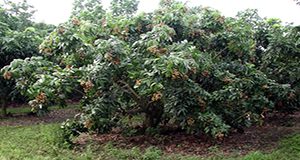
Interest is growing in minor tropical fruit crops. This 6-page publication written by Fredy H. Ballen, Edward A. Evans, Aditya Singh, and Jonathan H. Crane and published by the UF/IFAS Food and Resource Economics Department provides an estimate of the costs and returns associated with the operation of an established longan grove in south Florida. Information presented in this article was obtained through field interviews with growers and industry experts; it reflects a wide variety of production practices in small longan orchards of 1 to 4 acres and should help estimate the financial requirements of operating an established grove.
http://edis.ifas.ufl.edu/fe1049
Cost and Return Estimates of a Mamey Sapote Grove in South Florida, 2017
The objective of this 6-page fact sheet written by Fredy H. Ballen, Aditya Singh, Edward A. Evans, and Jonathan Crane and published by the UF/IFAS Food and Resource Economics Department is to provide an estimate of the costs and returns associated with an established mamey sapote orchard in south Florida.
http://edis.ifas.ufl.edu/fe1039
Cost Estimates of Producing Pink Guava (Psidium guajava L.) in South Florida
This 6-page fact sheet written by Edward Evans, Fredy H. Ballen, Jonathan Crane, and Aditya Singh and published by the UF/IFAS Food and Resource Economics Department presents the estimated costs and returns associated with the operation of an established pink guava grove in south Florida. The information presented was collected through field interviews with growers and industry specialists; it reflects a wide diversity of production techniques in small guava orchards. The information presented is intended only as a reference to estimate the financial requirements of operating an established pink guava grove.
http://edis.ifas.ufl.edu/fe1036
Cost Estimates of Producing Sapodilla in South Florida, 2017
This 6-page fact sheet written by Edward A. Evans, Fredy H. Ballen, Aditya Singh, and Jonathan H. Crane and published by the UF/IFAS Food and Resource Economics Department provides an estimate of the costs and returns associated with an established sapodilla orchard in south Florida. The information presented is based on a wide range of production practices collected through field interviews with growers and industry specialists and is intended as a guide to estimate the financial aspects of operating an established sapodilla grove. Please note that sapodilla has been assessed by the UF/IFAS Invasive Plants Working Group as potentially invasive in south and central Florida. It should not be planted in home landscapes or in groves near natural areas. Sapodilla plantings must be fenced, and the fruit must be moved in covered vehicles to prevent fruit being eaten by wildlife and the plant from infesting areas outside the grove.
http://edis.ifas.ufl.edu/fe1015
Finger Lime: An Alternative Crop with Great Potential in South Florida
Cylindrical Australian finger limes (Microcitrus australasica) taste like a combination of lemon, lime, and grapefruit, come in a rainbow of colors, and have a texture like caviar. Like other citrus fruits, finger limes are nutritious, low in calories, and vitamin-rich. So far in the United States only California grows finger limes commercially, but this 4-page fact sheet written by Aditya Singh, Edward Evans, Jeff Wasielewski, Manjul Dutt, and Jude Grosser and published by the UF/IFAS Food and Resource Economics Department makes the case that exotic, colorful finger limes would likely grow well in Florida, where they would appeal to hoteliers and restaurants and to adventurous, health-conscious consumers on the lookout for a delicious new fresh fruit snack to try.
http://edis.ifas.ufl.edu/fe1033
What the 2012 Census of Agriculture Is Telling Us about Miami-Dade County
Agriculture is an important contributor to Florida’s economy. Only the tourism industry employs more Floridians. In 2012, agricultural output was estimated at $141.8 billion, accounting for 14.9% of the state’s gross domestic product, and providing employment for 20.8% of the state’s labor force. Monitoring the performance of the sector over time is therefore of critical importance to various stakeholders. This 8-page publication written by Edward Evans and published by the Food and Resource Economics Department focuses on the Agricultural Census data for Miami-Dade County and specifically examines trends over the 15-year period from 1997 to 2012 with the aim of highlighting some of the major trends occurring in the Miami-Dade County agricultural sector. In general, the data show that in spite of challenging times, the agricultural industry has remained important, contributing $604 million to the Florida economy in 2012.
http://edis.ifas.ufl.edu/fe1001
Cost Estimates of Establishing and Producing Thai Guavas in Florida, 2014
The white Thai guava variety, which is very popular in the Asian market, is beginning to expand into mainstream markets. It has quick, high yields, is easily propagated and is tolerant to moisture stress and soil salinity. But even though it offers favorable returns, there has been little information about the cost of production. This 7-page fact sheet identifies inputs, costs, and yields considered to be typical of a well-managed five-acre Thai guava orchard in south Florida. Written by Stella Garcia, Edward A. Evans, and Jonathan Crane and published by the UF Department of Food and Resource Economics, August 2016.
http://edis.ifas.ufl.edu/fe998
Estimated Costs and Regional Economic Impacts of the Oriental Fruit Fly (Bactrocera dorsalis) Outbreak in Miami-Dade County, Florida
Oriental fruit flies, very destructive pests of fruits, were first detected in the Redland area of Miami-Dade County on August 26, 2015, and as of January 2016, 165 flies had been captured. This triggered an eradication program and establishment of a quarantine area composed of agricultural operations and nonagricultural properties, such as residential and commercial areas. As part of the effort to eradicate the fruit fly, growers and packers in the quarantine area are required to sign a compliance agreement that outlines the procedures necessary for harvesting, handling, and postharvest processing of agricultural products that may serve as hosts for any life cycle of the fruit fly. This 12-page fact sheet written by Sergio Alvarez, Edward A. Evans, and Alan W. Hodges and published by the UF Food and Resource Economics Department provides estimates of the direct and indirect losses to Florida’s agriculture and related sectors as a result of the outbreak and ensuing quarantine and eradication programs.
http://edis.ifas.ufl.edu/fe988
Ocho Pasos para Desarrollar un Plan Simple de Mercadeo

El mercadeo es parte esencial de un negocio. De hecho es el corazón de cualquier negocio que sirva la función vital de convertir actividades de producción en desempeño financiero, asegurando la supervivencia del negocio. El mercadeo es clave, sin importar el tipo de negocio (incluyendo la agricultura).
This 5-page fact sheet provides a rationale for developing a marketing plan, a step-by-step process for creating one, and a marketing plan worksheet. Written by Edward A. Evans and Fredy H. Ballen, and published by the UF Department of Food and Resource Economics. Translated into Spanish November 2015. (Photo credit: Thinkstock)
http://edis.ifas.ufl.edu/fe978
(also available in English as “Eight Steps to Developing a Simple Marketing Plan” at http://edis.ifas.ufl.edu/fe967)
Ejemplo Ilustrativo de los Costos y Rentabilidad de la Produccion de Aguacates en el Estado de la Florida

Los cultivos de árboles frutales son de gran importancia económica en la agricultura del estado de la Florida; en este segmento, la industria del aguacate ocupa el segundo reglón económico tras los cítricos. Aproximadamente el 80 por ciento de la cosecha se vende fuera del estado; por lo tanto, la industria aporta una cantidad considerable de “dólares nuevos” al estado, lo que resulta en un impacto económico total de cerca de $100 millones por año. Este artículo proporciona una estimación de los costos y rendimientos asociados a la producción de aguacate en el Condado de Miami-Dade y un breve análisis de la rentabilidad de la industria.
Written by Edward A. Evans and Ingrid Bernal Lozano, published by the UF Department of Food and Resource Economics in December 2014, and translated into Spanish in November 2015. The English version, titled Sample “Avocado Production Costs and Profitability Analysis for Florida,” is available at http://edis.ifas.ufl.edu/fe837. (UF/IFAS Photo by Tyler Jones).
http://edis.ifas.ufl.edu/fe970
Eight Steps to Developing a Simple Marketing Plan

Marketing is an essential component of any business, including agriculture. Despite the important role of marketing, many smallholding operators/growers are reluctant to create a marketing plan. This 5-page fact sheet provides a rationale for developing a marketing plan, a step-by-step process for creating one, and a marketing plan worksheet. Written by Edward A. Evans and Fredy H. Ballen, and published by the UF Department of Food and Resource Economics, August 2015. (Photo credit: iStock/Thinkstock)
http://edis.ifas.ufl.edu/fe967
Facts about Farm to School
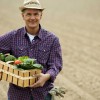 Farm to school is a nationwide program that improves the supply of fresh, local produce to schools by building relationships between local farmers and schools. Over the past 20 years, school districts in all 50 states have joined the F2S program and are purchasing items from local farmers. Recent requirements for more fruit and vegetables in the National School Lunch Programs have made the F2S program more popular than ever. The University of Florida is committed to the Farm to School program and is working closely with the Florida Department of Agriculture and Consumer Services to connect farmers to schools. This 3-page fact sheet was written by Samantha Ward, Lauren Headrick, and Karla Shelnutt, and published by the UF Department of Family Youth and Community Sciences, December 2014. (Photo: iStock/Thinkstock.com)
Farm to school is a nationwide program that improves the supply of fresh, local produce to schools by building relationships between local farmers and schools. Over the past 20 years, school districts in all 50 states have joined the F2S program and are purchasing items from local farmers. Recent requirements for more fruit and vegetables in the National School Lunch Programs have made the F2S program more popular than ever. The University of Florida is committed to the Farm to School program and is working closely with the Florida Department of Agriculture and Consumer Services to connect farmers to schools. This 3-page fact sheet was written by Samantha Ward, Lauren Headrick, and Karla Shelnutt, and published by the UF Department of Family Youth and Community Sciences, December 2014. (Photo: iStock/Thinkstock.com)
http://edis.ifas.ufl.edu/fy1450


